6. Fists in the Pocket (1965)
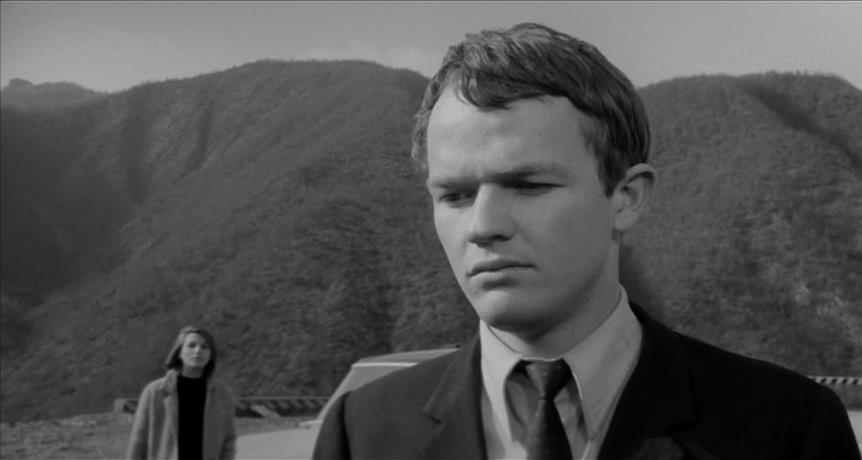
There are many who believe that the Italian film Fists in the Pocket is the great masterpiece no one much has ever seen. Those who see it are inevitably impressed and tell others but, seemingly, to no avail. Why?
Firstly, the plot should be considered. This is a family drama (with dark comic currents) and it’s like no other. The focus is on a family of five, a mother, three sons, and a daughter, all living together very compactly in a little villa. The mother, two of the sons, and the daughter are all invalids, mostly due to epilepsy.
This leads the one non-afflicted brother, Augusto (Marino Mase), to provide for everyone in a most backbreaking manner. One of the others, brother Alessandro (Lou Castel), who possesses a streak of what might well be termed practical outrageousness, decides that Augusto deserves better and decides to kill not only himself but mom and the other two invalided siblings as well! Augusto gets wind of the plot and his mind is poised between not wanting this horrific thing to take place and the thought of freedom at last.
If this film had come along a decade or so later, it would have been in fashion and not thought of as outré at all. However, this is one of the films which helped to influence the black comedy wave that began to become a decided presence in films in the decade or so after its release.
That makes the film look more conventional to modern viewers but, even then, the kind of art house patrons who would seek out such a film might be put off by the somewhat obscure directorial credit it bears. This was the debut feature of Marco Bellochio and a remarkable one it was.
Unfortunately, it was also the kind of dynamic debut a film maker sometimes spends a career trying to live up to and that was the case with Bellochio. Still, even though its maker didn’t leave a big mark on film history, this is a film worthy of recognition, if only everyone else would see it that way.
7. The Private Life of Sherlock Holmes (1970)
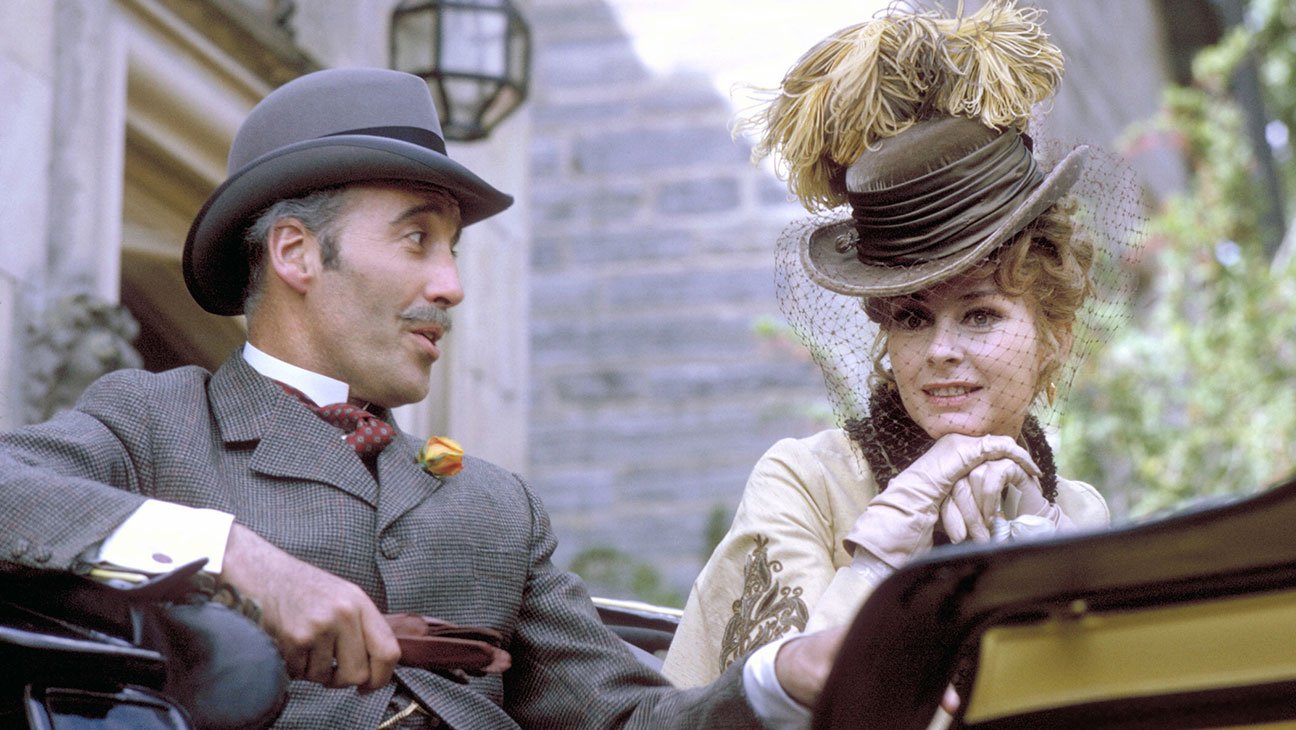
According to literary historians and biographers, British author Sir Arthur Conan Doyle was not unduly fond of what was and is, by far, his most famous literary creation, master detective Sherlock Holmes. However, much of the rest of the world seemed to be and is to this day.
Though many still read and dote on Doyle’s novels and stories involving Holmes, there has also, in more recent times, sprung up a cottage industry involving newly invented tales of Holmes’ life and adventures, narratives which often involve elements no proper Victorian, such as Doyle, would ever have included in their own works. One odd addition to this wave of neuvo Holmes works is a most atypical work from cinematic master Billy Wilder.
Wilder, who had a decade as a top screenwriter in Hollywood before becoming a director as well, enjoyed a golden decade and half from his debut with 1942’s The Major and the Minor through 1960’s The Apartment (or 1961’s One, Two, Three if one is generous). However, starting with 1963’s Irma La Douce (a hit with the public, if not the critics) things started to go sour. Perhaps that’s why he was willing to experiment with a film unlike any other in his cannon.
The Private Life of Sherlock Holmes, if nothing else, has a title that represents truth in advertising. Though Holmes and Watson do solve cases (one big one and another, originally three, smaller one) all relating much more to quirks in the great fictional detective’s personality and private life, particularly his sex life (or lack thereof) than anything else. Now, if this doesn’t hit one as being a natural fit for Wilder’s brand of cynical and acerbic modern wit…then one would be quite correct. This is an outlier in his filmography if ever there was one but a most intriguing one at that.
A number of big elements seemed to hurt this film from the get-go. Firstly, it was a bit ahead of its time (which is not necessarily a bad thing) in exploring its subject in an unorthodox manner.
The timing just wasn’t right. If it had come out about half a decade earlier, when Wilder was somewhere near the height of his popularity (even if it was in an afterglow sort of phase) or half a decade later, when Holmes fan-fic (so to speak) was having its vogue, it might well have been a real hit. Secondly, there was the matter of the casting.
Wilder decided to go non-star in an awkward way and moment, choosing stage actor Robert Stevens. He had just performed a key supporting role in then wife Maggie Smith’s big Oscar winning hit The Prime of Miss Jean Brodie (1969) but his casting, seemingly based more on the right look than anything else, mystified many and satisfied few.
Today, his work looks more interesting, if not perfect (Christopher Lee in the supporting role of brother Mycroft Holmes was more like it). Perhaps the biggest factor, though, was some extensive cutting prior to release and without Wilder’s approval, removing a modern day framing device, and two of the minor mystery episodes. Some elements of this footage have since been located, but not enough for full restoration.
In spite of all of this, the film is an arresting item with good supporting players such as Colin Blakely’s Dr. Watson, and Geneviève Page as the somewhat sympathetic femme fatale. There is also the remaining sub-plot involving the question of Holmes’ sexuality in concert with a situation involving a corps of ballet dancers. The film may not be perfect but it is a most unusual and captivating effort from a major talent.
8. The Two English Girls (1971)
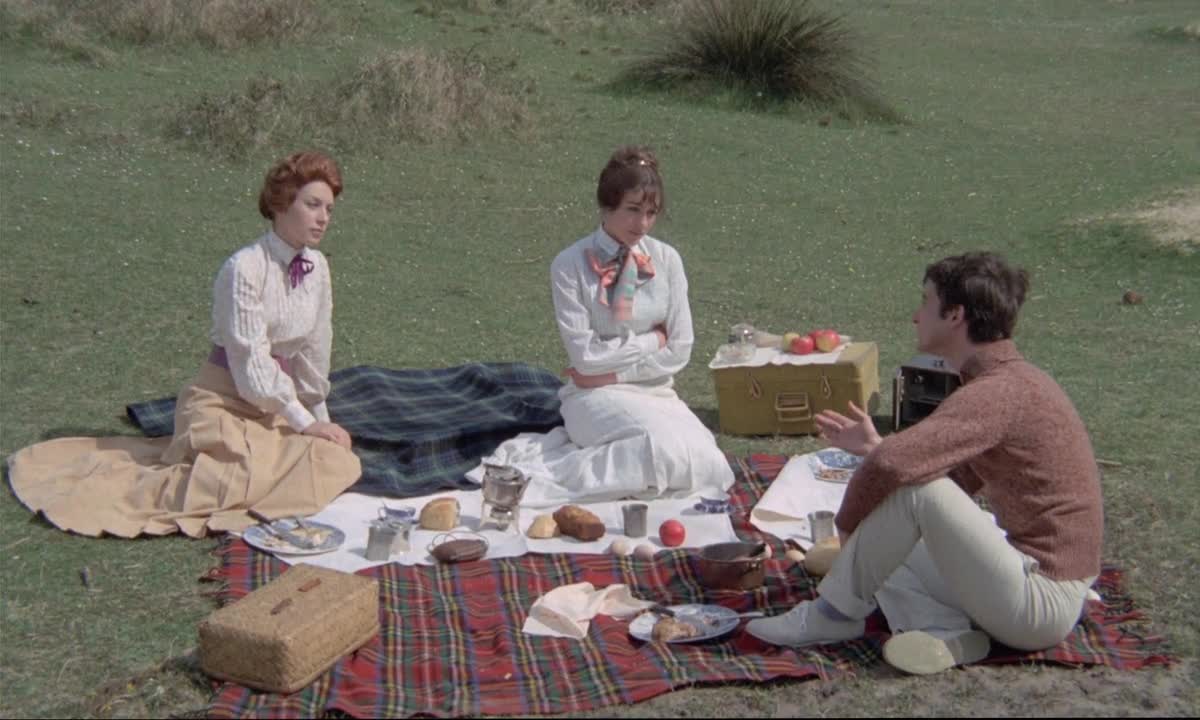
The French writer Henri-Pierre Roché wrote only two novels, both in his senior years, both concerning triangular relationships with a tragic bent (and both somewhat autobiographical) set in the early part of the 20th Century and, by coincidence or not, both ended up being filmed by one of the great French film makers (Novelle Vague or any other time), Francois Truffaut.
The first, and by far better known, was Jules and Jim, the basis of the 1961 film of that name and Truffaut’s third film and first really big hit (but also his third really fine film). The other book, Les deux Anglaises et le continent, would have to wait for another decade, would be besieged by a number of issues, and would only start to come into its own much later.
Two English Girls essentially inverts the genders and formula of Jules and Jim. Instead of a high spirited but dangerously unstable woman entering the lives of two male friends, this story features a handsome but morally lax and decadent young man (that eternal Truffaut staple Jean-Pierre Leaud), who is far from a menace, however, wandering into the lives of two very well brought up sisters (Kika Markham and Stacey Tendeter, good and professional actresses who were enjoying their only lead movie roles). Both women love him but, though one is a much more promising romantic partner than the other, neither will find a fulfilling relationship with him.
Jules and Jim was, at bottom, even more tragic than this story, but Truffaut’s youthful spirit of cinematic adventure kept it buoyant. A decade later, he had matured (and was far closer to his own death than anyone then might have imagined) and had gotten past his “look, ma, no hands” phase in films. He also knew by then how rare real chances were in life and how sad it is when they don’t work out, the real theme of this film. Pauline Kael tagged it “bewilderingly sad”, though, in all honesty, its sadness seems logical and well earned.
Past the sad theme and the lack of names, Leaud excepted, the film suffered from being mutilated by its producers. Truffaut restored it some time later when he was dying of a slow growing brain tumor and too sick to direct another film but still well enough to repair this one. The results were acclaimed by later day critics and viewers as one of his masterpieces. That it is and should be seen just as deservedly as its more famous sibling.
9. Don’t Look Now (1973)
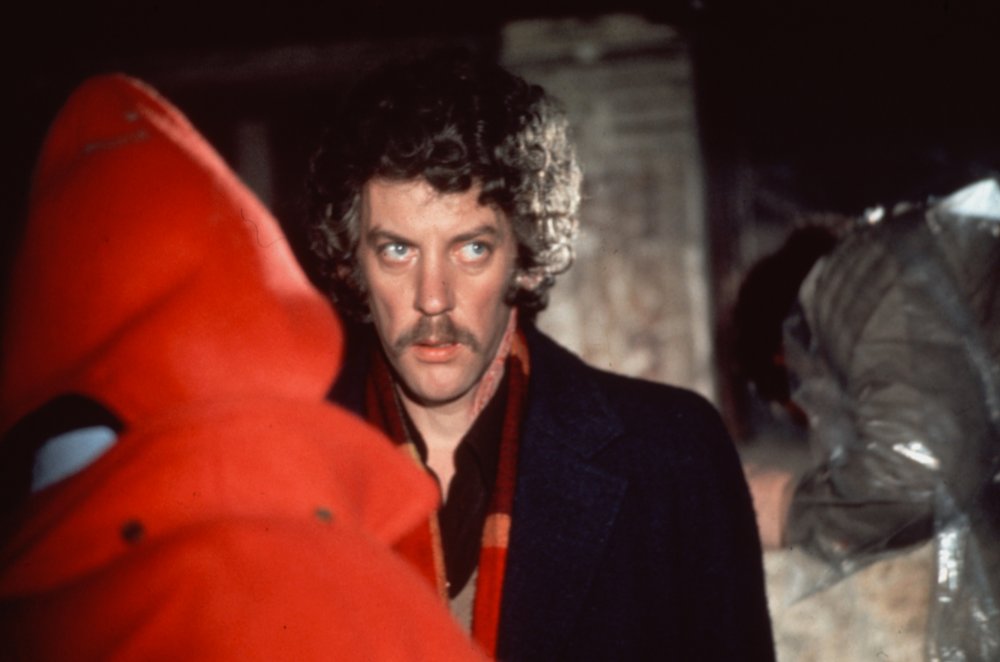
Noted cinematographer turned film maker Nicholas Roeg has suffered from a career which might well be term “top heavy’. All of his most notable films were made at the start of his directorial career and his output has trailed off ever since (though, it should be noted that he started at a more mature age than most). One early film which seems, however, to have been lost with the years a bit is his wonderfully atmospheric psychic thriller Don’t Look Now.
Taken from a long short story (or very short novel) by neo-classic British author Daphane DuMurier (Rebecca, My Cousin Rachel) the plot concerns a handsome British couple (Donald Sutherland and Julie Christie) in early middle age who suffer a terrible tragedy when their young daughter drowns in the small pond outside of their home.
Hoping to try and put the sad event behind them, they couple put their son in boarding school and the wife accompanies the husband to Venice, where he is performing his job as an art historian/restoration expert. There, in the dank and uninivitingly wintery off-season, they meet two sisters, one blind and supposedly psychic, who tells the couple that their daughter is trying to contact them. In the meanwhile, a series a brutal murders in plaguing the city, committed by a small figure in a red, hooded raincoat, just like the one the little girl was wearing when she died.
Starting as a cinematographer, Roeg always has thought in terms of images in telling the stories of his films and that isn’t a fact always understood or appreciated, certainly not at the time of the films releases.
The leads of this film offer fine performances and, in the pictures most noted scene, they are called upon to go the extra mile. In the middle of the film the couple are discussing the husband’s work after each has showered and he’s still naked. Laying on the bed together, they very naturally start to make love, which is intercut with the two dressing to go out afterward.
This scene seems superfluous on first viewing (though quite striking) but gains a deep poignancy in hindsight and the structure of the editing is telling the viewer something important concerning what the husband is seeing in relation to the events going on around him. Likewise, the climatic scene sidesteps tiresome exposition to reveal the plot’s secrets through a complex montage of images seen throughout the film but whose juxtapositioning finally makes sense of them.
As might be expected, the look of the film is stunning. Venice is, of course, one of the world’s loveliest places but the film quite successfully uses the dark blanket of winter to turn it into a supremely menacing place.
This and the sharp editing and deliberately elliptical direction keep the viewer nervous and off-center throughout the film’s running time, making an implausible story quite legitimately frightening. If one wishes, ignore the plot but see Don’t Look Now for the fine filmmaking exhibited.
10. The Duellists (1977)
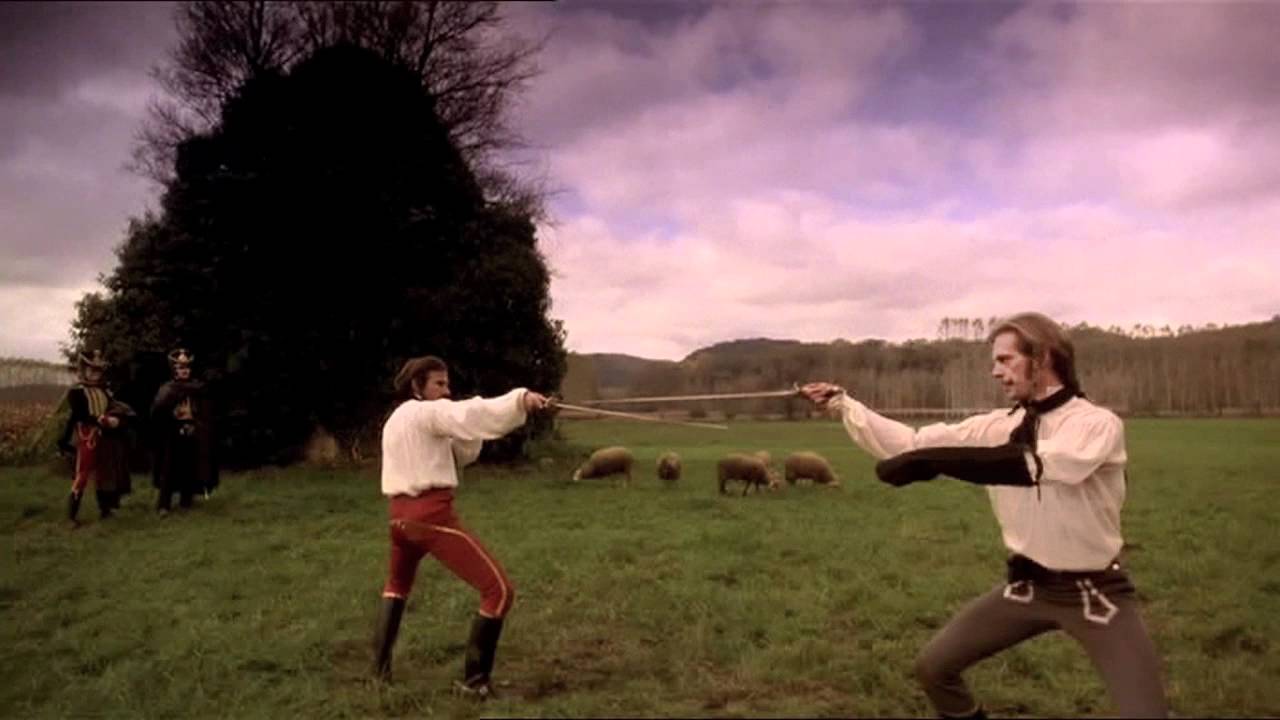
If an Oscar were awarded for “best visualist”, the faithful would be up in arms if it didn’t go to British born director Ridley Scott, so well known for such stunning looking films and for his touch with actors. He began his career with a film very much in the style of those bigger films, albeit on a much more modest budget, but hardly the worse for it.
After over a decade working for BBC TV as first a designer, then a director, Scott decided to make his feature film directorial debut with an adaptation of classic author Joseph Conrad’s short story The Duel. The story is set in continental Europe during the era of the Napoleonic Wars.
Two army officers argue over a petty matter and decide to settle it all with a duel. The duel, with swords, reaches no climax and must be continued…and continued….and continued as the two central figures come and go due to involvement with the larger conflicts and, in fact, lose the memory of what even started their battle initially. However, the pride of neither will allow them to relent.
Thanks to Scott’s industry connections, he was able to secure a much finer cast than a novice filmmaker can usually access. The leads are played by Harvey Keitel and Keith Carradine with a supporting cast including Albert Finney, Tom Conti, Edward Fox, Christina Raines, Robert Stephens (again!), Diana Quick and many familiar faces. Even better, thanks to expert location choices and the work of TV based colleges used to working with little and making a lot of it, the film has an impeccable sense of period and place.
When the film opened it got some good reviews, some notice at Cannes and a big, bored brush off at the box office from potential viewers who apparently decided that it sounded like something they’d have been forced to watch in school (and it might well have ended up being shown in some school somewhere). Those people cheated themselves out of a fine cinematic experience and this film out of its just due. This film has a small and enduring cult but it still should be much better known than it is.